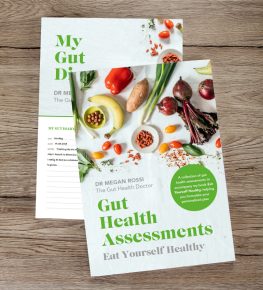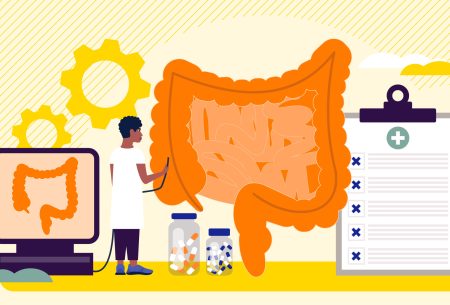For many people experiencing gut or non-gut symptoms, wheat is often suggested as the culprit. But should we be removing it and what is it that can cause gut or extraintestinal symptoms?
Firstly, it is key to rule out other, more serious wheat related conditions. The following conditions are common culprits for gut and non-gut symptoms relating to wheat:
- Coeliac disease (COD): This is an autoimmune condition where the body mistakes gluten (a protein in wheat) as being harmful. Ingestion of gluten causes damage to the gut and can result in gut symptoms such as bloating, changes in stools and gas. Also, it can result in extraintestinal symptoms such as mouth ulcers, recurrent headaches and dermatitis herpetiformis, to name a few. Testing for this is vital before removing gluten from the diet, as dietary changes for COD are extremely strict. Even cross contamination with gluten (e.g. using a toaster that has had wheat based bread in it) can cause damage to the gut lining.
- Gluten ataxia: This is another autoimmune condition, less common than COD, where the immune system attacks part of the brain in response to gluten ingestion. This can result in loss of balance or coordination and damage to the brain. This may be in conjunction with, or separate to, COD.
- Wheat allergy: this occurs when the immune system responds to a protein in wheat, which could be due to gluten or an alternative protein such as albumin or globulin. This reaction can vary from mild to severe (including anaphylaxis). Unlike an autoimmune condition, the body does not attack its own tissue. It treats one or more of the proteins as a foreign object. This can result in gut symptoms, swelling/itching around the mouth or even anaphylaxis.
So, what is non-coeliac wheat sensitivity?
This is very different from the conditions outlined above and doesn’t require strict avoidance toward wheat. Tolerance can be increased with frequent small exposures. It is therefore key to get the diagnosis right!
Unlike an allergy or an autoimmune condition, a wheat intolerance or sensitivity could be due to the sugars in wheat rather than proteins. The main sugar within wheat that people can be sensitive to is called a Fructan. There is a tolerance threshold and no damage to the body. This tolerance can change over time and also be built up, so unlike the above conditions, wheat does not have to be completely excluded or excluded forever.
What is a Fructan?
Fructans are molecules which are one type of fermentable carbohydrate (FODMAP) which feed the good bacteria within our gut (they’re a prebiotic). Fructans contain a chain of fructose (sugar) molecules, with a glucose (sugar) molecule at the end. As there are a few different sugars within a fructan, the structure can vary from food to food. If you are sensitive to fructans in one food, you may not necessarily be sensitive to fructans in another food. Fructans are within wheat, rye and barley, as well as a variety of fruits and vegetables.
Should you exclude all wheat-based products?
You may have had wheat related autoimmune conditions and allergy ruled out and are experiencing gut symptoms toward wheat-based products. Try restricting one or all wheat-based products strictly for 4 weeks and monitor your symptoms. Ideally, you would consult a registered dietitian who can guide you through the process and ensure your diet is nutritionally complete. If there are improvements, you want to test or challenge these foods to confirm a sensitivity. Try a small amount of the food and slowly increase over 3 days, to your usual portion size. You might find you tolerate bread better than pasta or vice versa. Some people also tolerate sourdough bread better than regular bread as some of the Fructans are broken down during the fermentation process.
Essential nutrients:
Wheat based-products are rich in fibre, iron and B vitamins. If you can, I recommend trying to build your tolerance to these products rather than completely excluding them.
The importance of diagnosis:
If you’re having gut or non-gut symptoms which you think may be exacerbated by wheat or other dietary factors, it’s key to see your GP before making dietary exclusions. They can do a simple blood test called a tissue trans-glutaminase (TTG). It can be then used as a diagnostic marker of COD. COD is confirmed through a camera test (endoscopy) where small cuttings of tissue (biopsies) are taken and looked at under a microscope for tissue damage which confirms the coeliac disease. For a TTG or tissue biopsies to be accurate, you need the equivalent of 4 slices of bread/day in your diet (8-10g gluten/day) for 4-6 weeks prior to your test.
This is why it is key to have the test before excluding wheat as if symptoms do improve. It can be difficult to re-introduce wheat to the required level for an accurate blood test or even biopsy sample. Wheat allergy should also be excluded before making any dietary changes.
Take home:
- If you have gut or non-gut symptoms which you suspect may be related to wheat, visit your GP before making any exclusions
- If your GP or gastroenterologist rules out an autoimmune condition (e.g. COD, gluten ataxia) and wheat allergy, trial a 4 week exclusion, ideally guided by a registered dietitian
- If your symptoms improve, it is key to test or challenge wheat to confirm the sensitivity. Moving forward, you can test different types of wheat-based products to deduce which you are more sensitive to
- Wheat-based products are a great source of iron, B vitamins and fibre as well as being prebiotics. Aim to include small, frequent servings, in order to build up your tolerance
We can help you in the clinic if you suspect an intolerance of any kind, so do please get in touch for support.
This blog was authored by Lucy Kerrison, a gut specialist dietitian.













